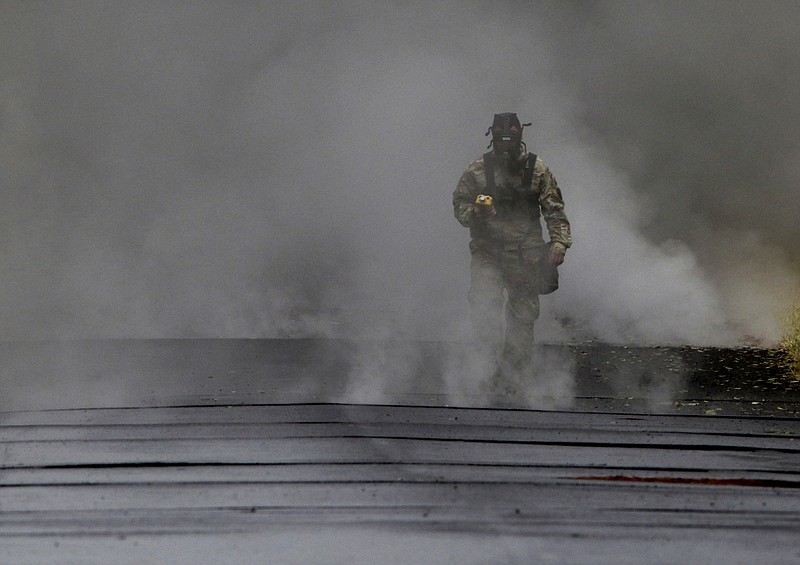PAHOA, Hawaii (AP) - Edwin Montoya's family carved their farm on the slopes of the Kilauea volcano out of "raw jungle," transforming it into a fertile collection of gardens, animal pens and fruit trees.
Now the property is imperiled by the very land it stands upon. A couple of miles up the hill, lava has destroyed dozens of homes, and his daughter's farm is in an evacuation zone.
Despite the nearby danger, Montoya plans to stay unless he is forced to leave. "I'm going to go ahead and stick it out," he said. "If it happens, if it blows its top and I'm there at the time, I'm 76 years old. I've lived a good life."
Because there's no indication when the eruption might stop, or how far the lava might spread, the volcano has forced people living in and around the Leilana Estates subdivision to make tough decisions.
Some residents insist on staying to watch over their property. Others have abandoned their homes without knowing when they will be able to return, or if they will come back to find their houses turned to ash and buried under solid rock.
Andrew Nisbet evacuated last week and has no idea what has happened since.
"My home is right in the line of the major breakouts so maybe, maybe not," he said Monday during a community meeting.
Authorities urged Scott Wiggers to evacuate, but he refused.
"I'm in the safest part in the subdivision. There's no threat to my house whatsoever," Wiggers, a tour guide, said.
Wiggers said he wasn't leaving his home on the outskirts of the evacuation zone because he worried if he did, he wouldn't be able to get back in. But he's prepared in case the situation takes a turn.
"I am packed. My truck is loaded. I'm not a dumb-dumb. If I see a threat, I'm out of here," he said.
Hawaii Gov. David Ige told evacuees he has called the White House and the Federal Emergency Management Authority to tell officials he believes the state will need help to deal with the volcano on the Big Island.
Authorities are allowing some evacuees to return briefly each day to gather medicine, pets and other necessities.
Montoya, who moved to Hawaii to be with his family about six years ago, said he saw most of the United States as a truck driver for 25 years on the mainland. He prefers life on Mystic Forest Farm, in a purple octagonal house his family built nearly 20 years ago.
The farm is at the end of a long, single-lane gravel road, with large volcanic rocks scattered about and large pools of water to drive through.
Montoya is tending to the farm's animals - sheep, chickens, rabbits and several cats and dogs - and watching over the property to prevent looting.
Officials warn lava could flow downhill and burn areas that are not currently in danger, and toxic volcanic gas could kill people, especially the elderly and those with breathing problems.
Events remain unpredictable. On Sunday, the first day residents were allowed back in, a cellphone alert went out urging people to leave after a vent opened up and began spewing sulfur dioxide. Officials were worried some residents could become trapped.

